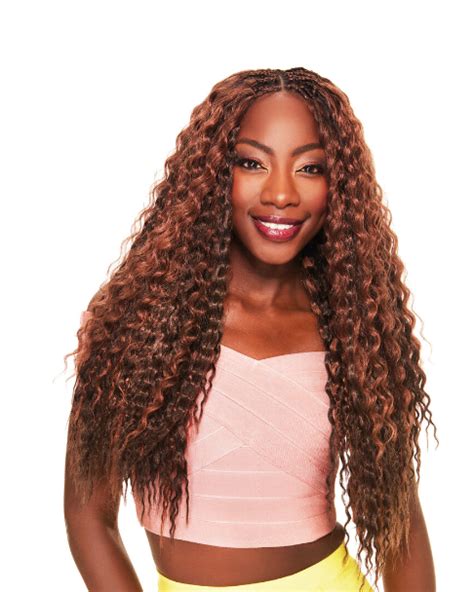Wigs have become increasingly popular among white females, offering a versatile and stylish way to enhance their appearance. From everyday wear to special occasions, wigs provide endless possibilities for transformation and self-expression. This guide delves into the world of wigs for white females, unveiling the latest trends, essential considerations, and tips for finding the perfect match.

Understanding the Wig Market
According to the American Hair Loss Association, approximately 50 million American women experience some degree of hair loss. Wigs have emerged as a sought-after solution, with the global market projected to reach $15 billion by 2024 (Grand View Research).
Types of Wigs for White Females
Wigs come in a myriad of styles, materials, and constructions, each catering to different needs and preferences. Some common types include:
-
Lace Front Wigs:
Natural-looking wigs that feature a sheer lace front that mimics the scalp, creating the illusion of hair growth. -
Human Hair Wigs:
Made from real human hair, these wigs offer exceptional quality, versatility, and longevity. -
Synthetic Wigs:
Constructed from synthetic materials, these wigs are budget-friendly, easy to maintain, and come in a wide range of colors and textures. -
Monofilament Wigs:
Feature a transparent monofilament cap that allows for flexibility and breathability, creating a skin-like appearance.
Choosing the Right Wig for Your Skin Tone and Hair Type
Finding a wig that complements your skin tone and hair texture is crucial for achieving a natural and flattering look.
-
Skin Tone:
Fair-skinned women should opt for wigs in light shades such as blonde, ash brown, or gray. Medium-skinned women can experiment with a broader range of colors, including honey blonde, caramel brown, or dark chocolate. Dark-skinned women generally suit deep shades like black, burgundy, or auburn. -
Hair Type:
Straight hair types can wear any wig texture, while curly or wavy hair types may prefer wigs with similar textures to avoid clashing styles.
Essential Considerations for Wig Wearers
-
Fit:
Ensure the wig fits snugly but comfortably, allowing for freedom of movement without slipping or shifting. -
Cap Construction:
Choose a cap construction that suits your scalp sensitivity and head shape. Cap sizes vary, so it’s important to measure your head circumference for a precise fit. -
Hairline:
Avoid wigs with unnatural-looking hairlines; instead, opt for wigs with a realistic, blended hairline that seamlessly blends with your skin. -
Maintenance:
Wigs require varying levels of maintenance depending on the material. Human hair wigs need regular washing, conditioning, and styling, while synthetic wigs require less maintenance but may need occasional washing to remove buildup. -
Styling:
Wigs can be styled using heat tools (only for human hair wigs) or setting sprays. Consult a wig specialist or stylist for professional guidance on styling techniques.
Benefits of Wearing Wigs for White Females
-
Hair Loss Prevention:
Wigs can protect natural hair from damage caused by heat styling, chemical treatments, and other environmental factors. -
Versatile Styling:
Wigs offer endless styling possibilities, allowing you to experiment with different colors, textures, and lengths without damaging your own hair. -
Enhanced Confidence:
Wigs can significantly boost self-esteem and confidence by providing a full head of hair, regardless of hair loss or thinning. -
Medical Reasons:
Wigs are a discreet solution for women undergoing chemotherapy or other medical treatments that cause hair loss. -
Convenience:
Wigs eliminate the need for daily hair styling, saving time and effort.
Common Mistakes to Avoid When Choosing a Wig for White Females
-
Choosing the Wrong Shade or Texture:
Always consider your skin tone and hair texture when selecting a wig color and style. -
Ignoring Cap Fit:
An ill-fitting wig can be uncomfortable and distracting. Ensure the cap fits snugly but comfortably. -
Purchasing Cheap or Poor-Quality Wigs:
Avoid wigs made from low-quality materials or with unnatural-looking features. Invest in well-made wigs that will last longer and look more natural. -
Overdoing Styling:
While wigs offer styling flexibility, avoid excessive styling that can damage the hair fibers. Stick to gentle styling techniques and consult a professional stylist for advice. -
Neglecting Maintenance:
Regular cleaning is essential for keeping wigs in good condition. Follow the manufacturer’s instructions for specific maintenance needs.
Conclusion
Wigs for white females are a versatile and transformative tool that can enhance appearance, boost confidence, and provide a solution for hair loss. By understanding the types of wigs available, considering skin tone and hair type, and following essential considerations, you can find the perfect wig to fit your individual needs and desires. Embrace the power of wigs and empower yourself with a stunning and natural-looking head of hair.
